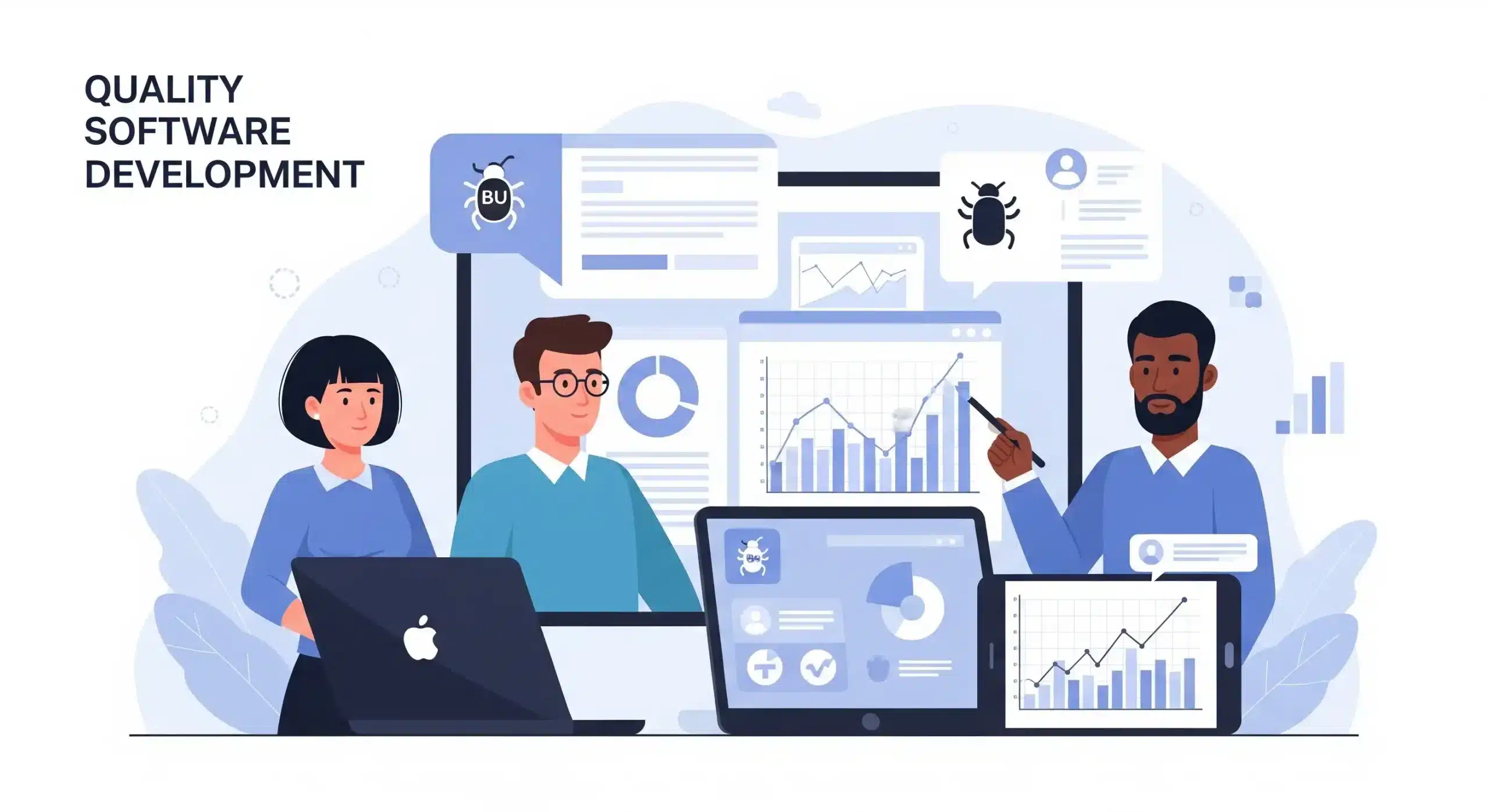5 Proven Ways of Managing Technical Debt for Software Services

In software development, managing technical debt for software services refers to the accretion of work that builds up when developers choose to implement quicker and short-term solutions instead of more optimal and more relevant solutions that also need more effort.
Understanding Technical Debt in Software Development
Technical debt management uses a financial metaphor to define how short-term decisions like borrowing money with interest can have drastic impacts on the future. Could be significant – owing a lot of interest to someone, being denied additional credit, hampering your credit score with a negative image, and many more.
It may seem like a great idea for many people to get a car loan but this is only significant if you can consistently make the payments. Otherwise, you will put yourself in major trouble down the road.
Technical debt on software services works the same way! It’s not always a bad thing and it’s certainly not the result of lazy developers who want to take shortcuts often, software development technical debt may sometimes be a great way to get an MVP and outshine the competitors in the market. The only thing which is required is to implement the most elegant solution today. But as you start generating revenue sooner, you can carve out time to address and fix the software development bugs in the future that will result in project failure.
Yet another reason for Technical debt is to place unrealistic time or resource constraints on the software development team. If you will assign your developers a very short time to complete a whole month’s worth of work, you’re setting yourself up for technical debt.
How to Manage Technical Debt Effectively?
In product management, is it best to avoid taking on unnecessary debt and negotiate existing debt without slowing things down or stalling innovation? Here are some tips for effectively managing technical debts –
1. Making Technical Debt a Prime Concern in Your Conversation with Developers
Odds are that your software development team is already familiar with existing technical debt and is likely to share debt-related insights to help you weigh the pros and cons of planning decisions and putting smarter solutions on the table.
Including technical debt in your conversations and meetings can help keep the focus on long-term growth, flexibility, and scalability. You can ask your development experts and analysts to lead a few specific sets of questions to make smart decisions on when to take on additional debt or when to devote more resources to reduce the existing debt alongside other development activities. These questions could be –
- How taking shortcuts in software services can save us now?
- What are the benefits of opting for a less-than-ideal fix today?
- What potential challenges or limitations would set us up for later?
- Do we fully understand the dependencies of each team member to overcome the technical debts?
- Is it going to impact our software development process?
- If we opt for the technical debt, what could be the future implications?
- Does the project deadline conflict with other release plans, feature updates, etc?
- How long can we possibly finish the project?
Custom AI Software Development Solution For Enterprises
2. Supervise the Technical Maintenance
Dedicating some of your development time to business-as-usual activities including bug fixes, system maintenance, etc to effectively managing technical debt as they require some organizational advocacy to make this a standard part of the culture.
Technical debt is like a nightmare that haunts your development team’s dreams and constantly eats away their productivity and efficiency to perform well.
One strategy for building enthusiasm around debt-related activities is to spend more time analyzing what potentially could happen if you and your team don’t address your technical debt.
As a product manager, it’s your responsibility to advocate for the development time spent on debt-related projects. Prepare a swimlane of product importance and engineering roadmaps to ensure instant bug fixes and routine maintenance to gradually eliminate technical debt. It will help ensure that you’re advancing your product while fixing all its vulnerabilities and weaknesses.
This ongoing approach will help strengthen your architecture and make it more stable so you can feasibly launch new features while saving time and extra cost.
3. Develop a KPI
For effective technical debt management, it’s crucial to prioritize the work and have KPIs around your product performance or development velocity. At Cloudester, we focus on understanding where our users are satisfied or dissatisfied with the product’s overall web or app experience. We have initiatives to enhance our user satisfaction score and can use this as an objective way to evaluate the priority of framework changes.
If you’re going upstream against a culture that doesn’t support managing technical debt, being a product manager you can also prioritize feature-related work that can help lower some technical debt.
4. Encourage Rigorous Tracking of Technical Debt
With technical debt for software services, you can have some immediate benefit today and time-shifting a bigger project to the future. In software development, the tasks that end up on the backlog mean they can be tracked and prioritized along with other activities for the future. At the same time, if they’re being logged somewhere else, the possibility to get them done are lower.
Similarly, keeping technical debt on your software development backlog will have the added benefit of emphasizing that addressing these issues is as important as addressing new development activities.
Having everything in one place encourages the implementation of the prioritization process!
5. Plan Reasonable Workloads
The easiest way for technical debt management is to consult with engineers as you develop your product roadmap. It’s better to ensure your expectations for timelines align reasonably well with the development bandwidth to avoid further risks of technical debts.
At times, it will be quite unavoidable to take on technical debt but as a product manager, your job is to make sure that the ongoing health of your product is maintained and quality-driven.
If technical debt on your software services starts to get out of control, you’re the one that’s eventually going to feel that pain along with your customers. So, you must better ensure the long-term agility and health of your product and foster better communication, empathy, and transparency between product and engineering teams.
Powerful project management consultants like Cloudester help you gain a big-picture perspective of your project while simultaneously monitoring your project progress, identifying, and managing technical debt, and allocating time and resources to addressing shortfalls.
Are you ready to plan and execute your next software project on time without compromising on quality? Connect with us today!









